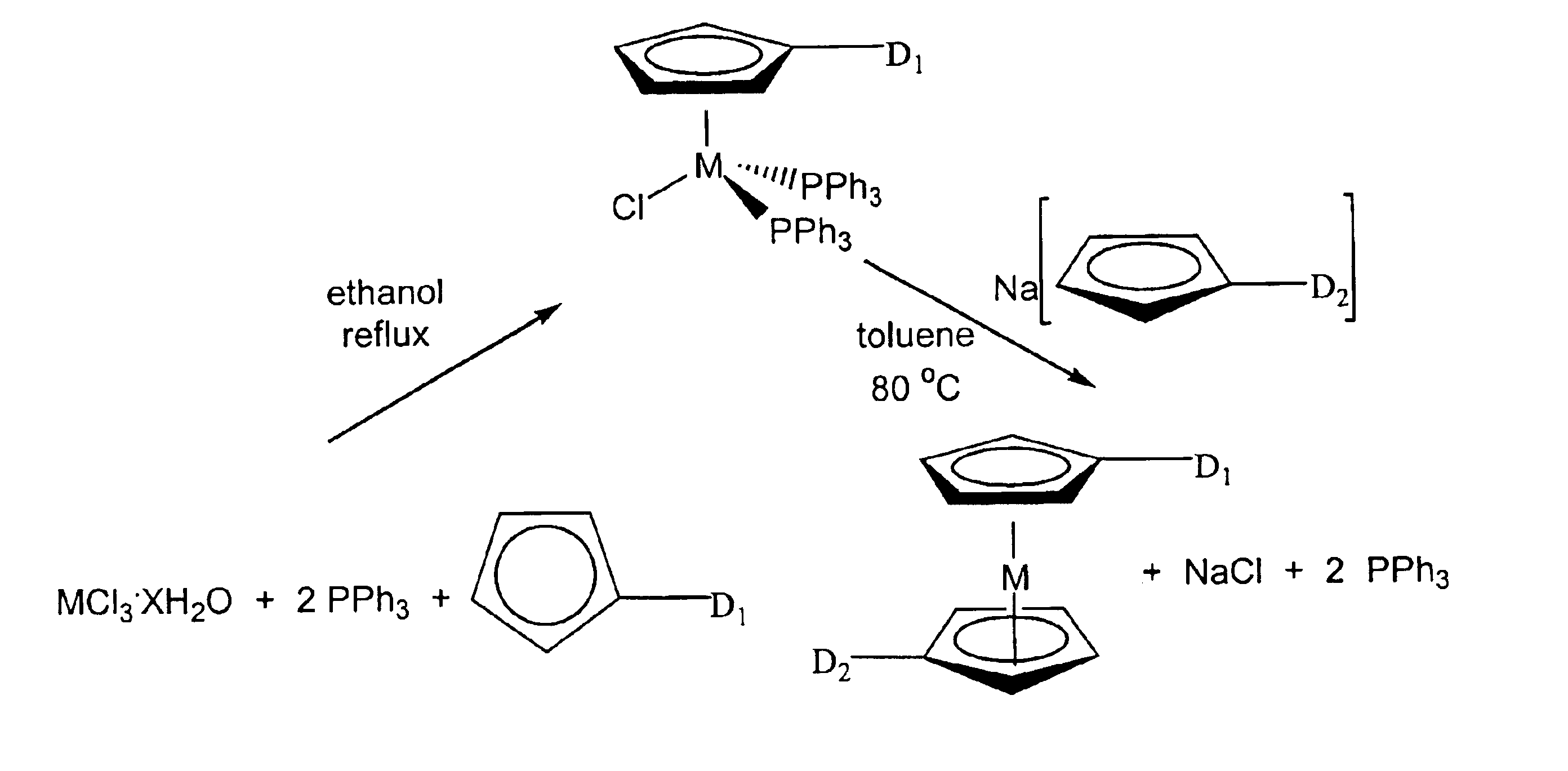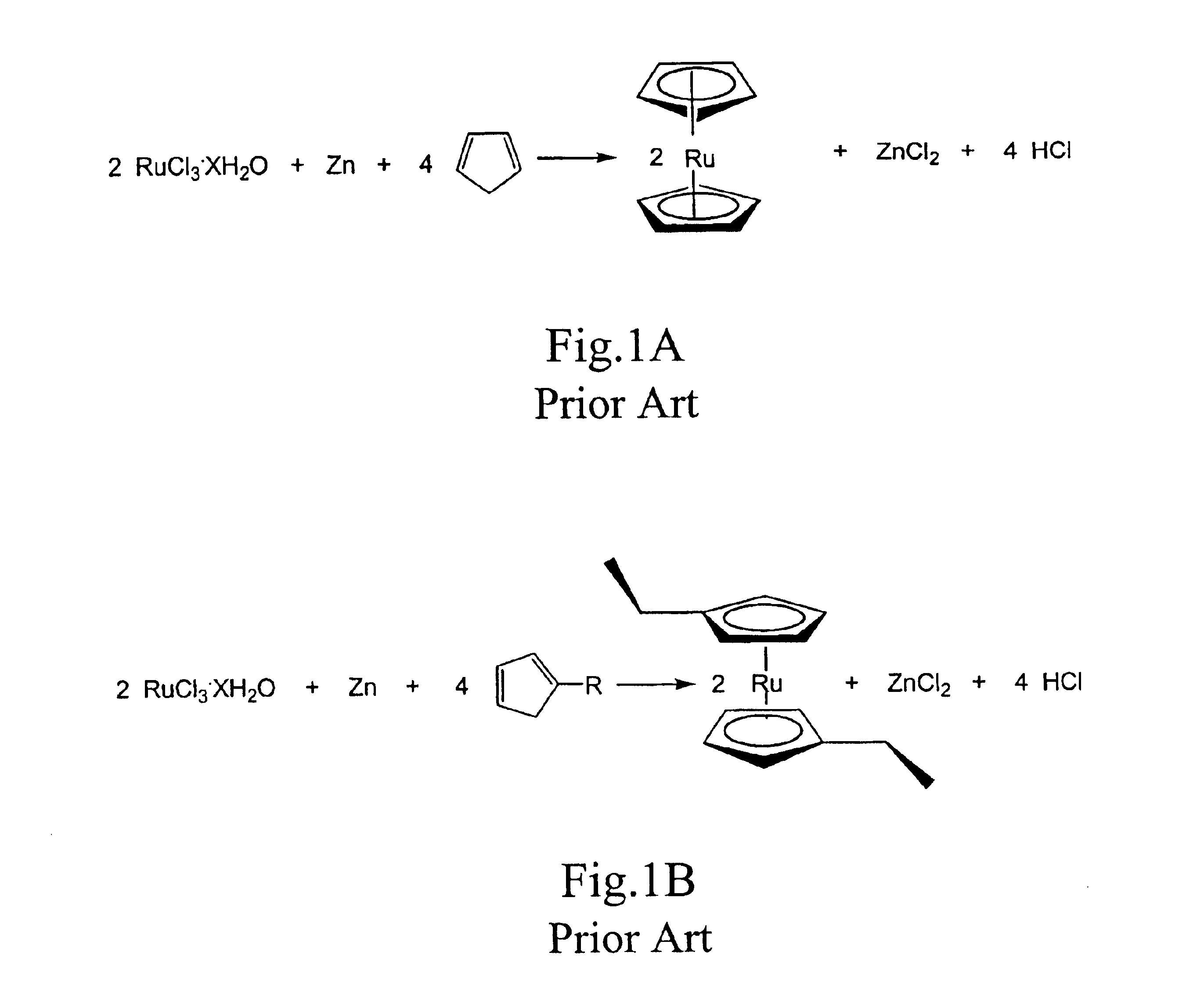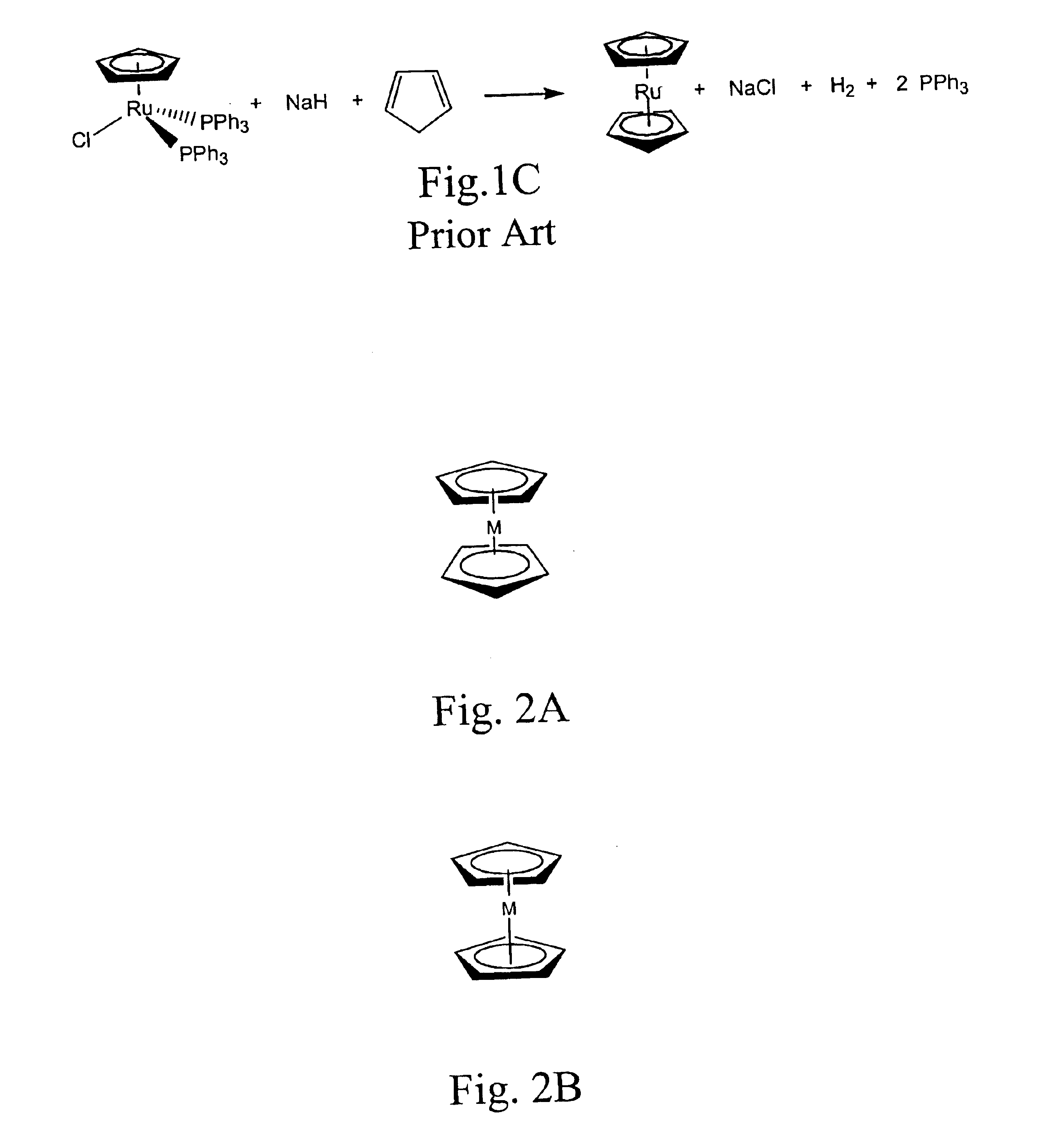Methods for making metallocene compounds
a metallocene and compound technology, applied in the field of metallocene compound making methods, can solve the problems of low yield 1,1′-dialkylruthenocene, iron trichloride (feclsub>3/sub>), difficult to separate iron species, etc., and achieve the effect of eliminating the need for sodium hydride, facilitating final purification steps, and high product yield
- Summary
- Abstract
- Description
- Claims
- Application Information
AI Technical Summary
Benefits of technology
Problems solved by technology
Method used
Image
Examples
example 1
Step A
[0177]A 2 L three-necked round bottomed flask was charged with a Teflon® (perfluorinated polymer, DuPont Corp.) stirring bar, ethanol (1.0 L) and PPh3 (263 g, 1.0 mol). A 250 mL dropping funnel, a 150 mL bath-jacketed dropping funnel, and a condenser were attached to the three necks of the 2L flask. It is important to note that both dropping funnels were equipped with Teflon® (perfluorinated polymer, DuPont Corp.) valves that permitted their isolation from the atmosphere of the round-bottomed flask. A rubber septum was connected to the top of the 150 mL bath-jacketed dropping funnel. The top of the condenser was fitted with an T junction adapter and connected to an inert atmosphere. A heating mantle was placed beneath the 2 L three-necked round-bottomed flask and the solution was stirred and heated to reflux. At reflux all of the triphenylphosphine dissolved in the ethanol. The system was purged with nitrogen for 3 hours while at reflux.
[0178]While this was taking place a 500 ...
example 2
Step A
[0188]The procedure of step A was the same as described in Example 1, above.
[0189]Specifically, a 2 L three-necked round bottomed flask was charged with a Teflon® (perfluorinated polymer, DuPont Corp.) stirring bar, ethanol (1.0 L) and PPh3 (263 g, 1.0 mol). A 250 mL dropping funnel, a 150 mL bath-jacketed dropping funnel, and a condenser were attached to the three necks of the 2 L flask. Both dropping funnels were equipped with Teflon® (perfluorinated polymer, DuPont Corp.) valves that permitted their isolation from the atmosphere of the round-bottomed flask. A rubber septum was connected to the top of the 150 mL bath-jacketed dropping funnel. The top of the condenser was fitted with a T junction adapter and connected to an inert atmosphere. A heating mantle was placed beneath the 2 L three-necked round-bottomed flask and the solution was stirred and heated to reflux. At reflux all of the triphenylphosphine dissolved in the ethanol. The system was purged with nitrogen for 3 h...
example 3
Step A
[0195]A procedure similar to Example I (Step A) was employed. A 5 L five-necked round bottomed flask was equipped with a mechanical stirring paddle through the central neck. It was then charged with ethanol (2.0 L) and PPh3 (420 g, 1.6 mol). Two 500 mL three necked flasks, were connected to two necks of the 5 L four-necked flask via Teflon® (perfluorinated polymer, DuPont Corp.) tubing through positive displacement pumps. The remaining neck of the 5 L flask was equipped with a condenser. A heating mantle was placed beneath the 5 L flask and the solution was stired and heated to reflux. At reflux all of the triphenylphosphine dissolved in the ethanol. The system was purged with nitrogen for 30 minutes while at reflux.
[0196]While this was taking place one of the 500 mL round-bottomed flasks was charged with RuCl3.XH2O (100 g, 0.40 mol), ethanol (300 mL) and a Teflon® (perfluorinated polymer, DuPont Corp.) coated magnetic stirring bar. The ethanolic solution immediately developed...
PUM
| Property | Measurement | Unit |
|---|---|---|
| Boiling point | aaaaa | aaaaa |
Abstract
Description
Claims
Application Information
 Login to View More
Login to View More - R&D
- Intellectual Property
- Life Sciences
- Materials
- Tech Scout
- Unparalleled Data Quality
- Higher Quality Content
- 60% Fewer Hallucinations
Browse by: Latest US Patents, China's latest patents, Technical Efficacy Thesaurus, Application Domain, Technology Topic, Popular Technical Reports.
© 2025 PatSnap. All rights reserved.Legal|Privacy policy|Modern Slavery Act Transparency Statement|Sitemap|About US| Contact US: help@patsnap.com



